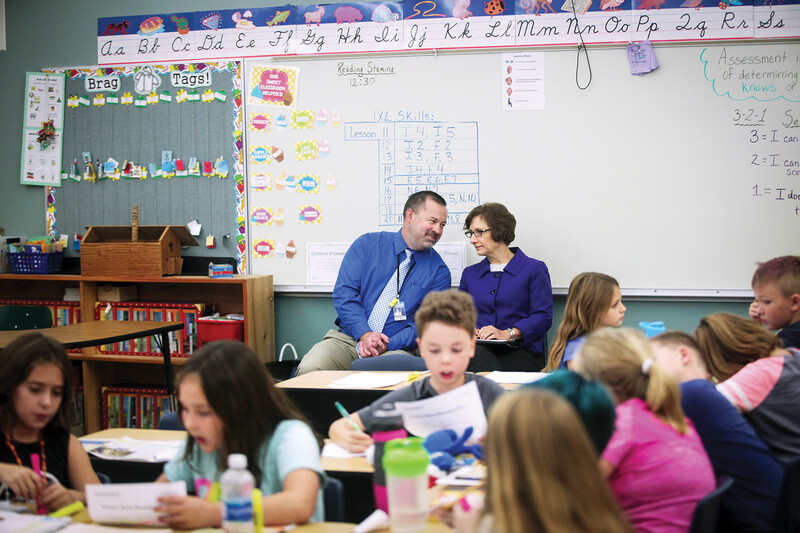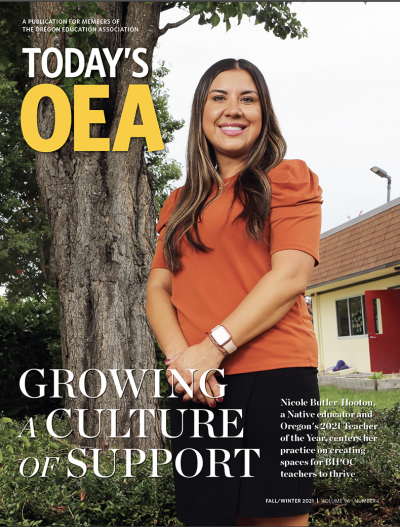Many of us have heard the famous story of President John F. Kennedy and his encounter with a NASA janitor. The story goes that while visiting NASA, Pres. Kennedy encountered a janitor and asked, “What do you do here?” The janitor replied, “I’m putting a man on the moon.”
Though the exact details of the story vary, the message remains the same. NASA and Pres. Kennedy had a vision and a dream to be the first country to land a man on the moon. That vision and dream was embraced by all in the organization, not just the astronauts or engineers. Every day, that janitor came to work to create the best work environment for others at NASA, but they were all in it together with each job helping the organization to achieve excellence.
The Every Student Succeeds Act holds many opportunities for our schools, and chief among them is the same vision that drove that janitor to do his part. It is the responsibility of everyone in a school community to help improve our schools.
A Shared Vision
NEA and OEA cheered when ESSA passed in December 2015. One of the overarching themes of the legislation is that ESSA returned decision making to those who know schools and students the best – the educators, community, and families in the school community.
Gone are the days of No Child Left Behind where the federal government dictated the strategies schools could use to improve. Gone are the days of having to choose to close and reopen a school as a charter school or hire a new principal and staff in order to get federal improvement funds. Gone are the days of improvement decisions made behind closed doors by a select few.
The new legislation mandates that school improvement decisions be made with the involvement of stakeholders. This includes classroom teachers, specialized instructors like counselors or school psychologists, paraprofessionals, families, and tribal members.
ESSA also doesn’t outline a limited number of approaches to improving schools. Instead, it gives that autonomy to school communities to respond to their local need. What works in Glide might not be right for Nyssa. A strategy that works for chronic absenteeism with elementary students might not work for high school students.
Improvement for All Schools
ESSA is sometimes seen as only affecting schools that receive Title I money. Title I funds are federally designated to provide supplemental funds so all children have the opportunity to receive a fair, equitable, and high quality education, and to meet the education needs of students in schools with high rates of poverty.
But all schools should constantly be in a state of improvement. In Oregon, every school and district is required to write and submit continuous improvement plans, also known as CIPs. The goal of this requirement is that schools and districts continuously assess student outcomes and student needs, and then act to meet those needs.
As educators, we should always be looking for ways to improve teaching and learning conditions for our students.
We never arrive at a place of perfection or conclude that we’re doing “good enough.” Instead, educators should strive for that man on the moon vision.
Getting Started
Start by getting educated. Use resources available through OEA’s ESSA website or NEA’s My School, My Voice website (www.myschoolmyvoice.nea.org).
Then, ask questions. Ask your principal about school improvement teams or to see the school’s improvement plan or Title I plan. Are there opportunities to join work groups or leadership teams to have your voice heard?
Ask your union leaders if they are engaged in district-level conversations. Does your local association have a school improvement committee, labor management committee, or professional development committee you could join?
Then, get organized and involved. If your school or district isn’t adhering to ESSA’s intent for wide stakeholder engagement, how can you organize to ensure educator, community and family voices are heard? OEA’s Educator-Led Improvement Toolkit is a great place to start organizing for educator voice. OEA staff members and leaders can also help local teams organize for educator voice. If your school and district have embraced collaboration, find ways to get involved and get your voice heard.
Shaping the Future
President Kennedy had a vision to put a man on the moon. OEA has a vision to improve the future of all Oregonians through quality education. Our association can only achieve that vision if we all work together to turn that vision into a reality.


